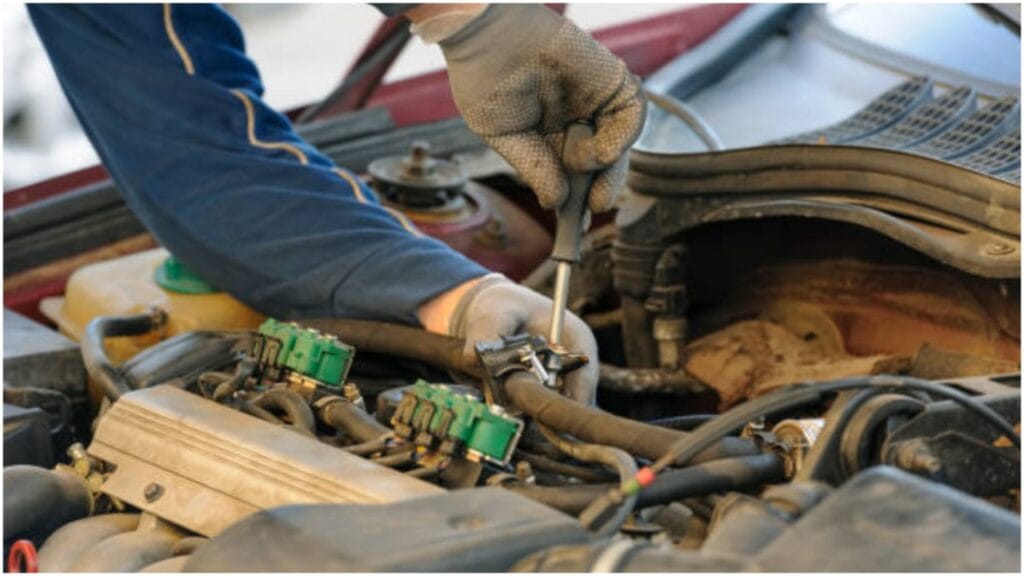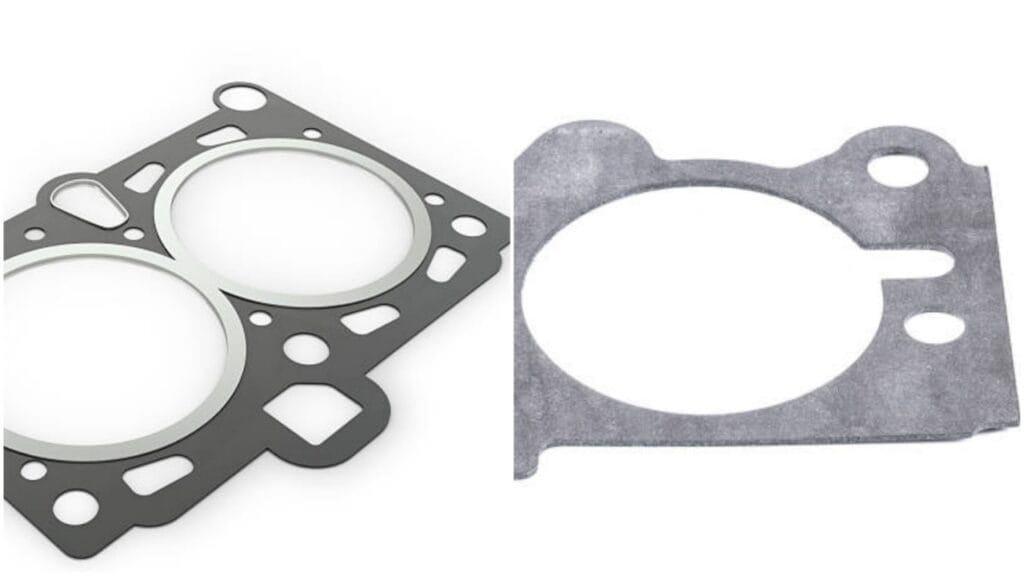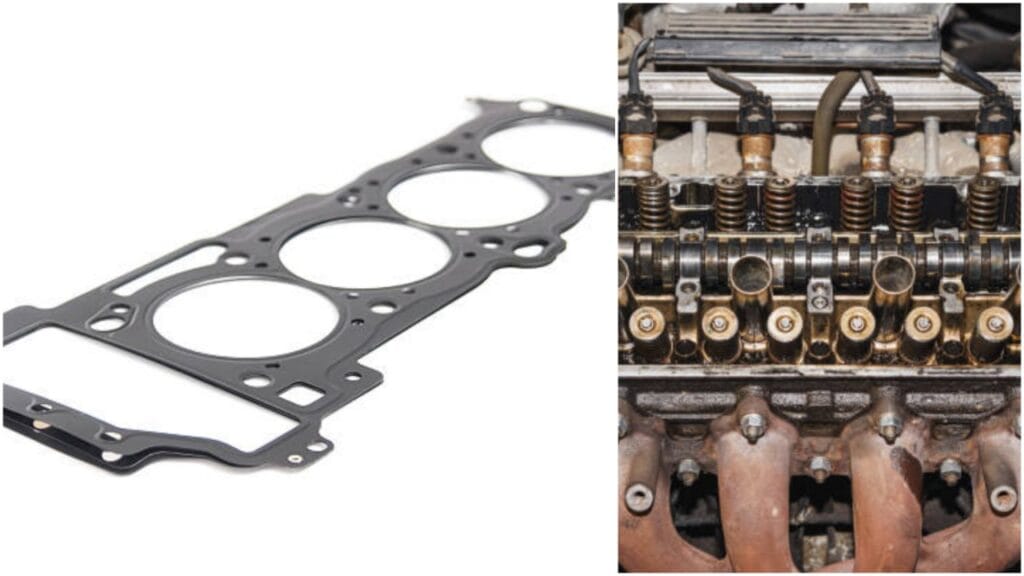A valve cover gasket is designed to last a long time but doesn’t last forever. It’s made from rubber or cork that can break down over time. The heat from the engine, constant pressure, and natural wear and tear can all take a toll.
On average, a valve cover gasket can last five to ten years, depending on how well the engine is maintained. Regular oil changes and keeping the engine clean can help it last longer. Extreme conditions, like driving in very hot or cold climates, can shorten its lifespan.
Leaks are the most common sign that a gasket is failing. If you notice oil spots or a burning smell under your car, it could be a worn-out valve cover gasket. Ignoring it can lead to more significant problems, like oil leaking onto other engine parts.
Follow the steps below to get a better idea about this. They will help you understand your needs.
The Silent Worker
The valve cover gasket sits quietly between the valve cover and the cylinder head. Without it, your engine would be an oily, chaotic mess.
But here’s the thing—it doesn’t get the luxury of a cushy job. It’s right there in the thick of it, exposed to the heat of the engine, the constant vibrations, and all that high-pressure activity under the hood.
It’s made of materials designed to be tough—rubber, cork, and sometimes a mix of silicone. These are chosen because they can handle heat, oil, and wear.
The Clock Starts Ticking
Every car, every driver, and every situation is different. For some people, the gasket could last as long as the car. If everything goes smoothly, you might never even think about it.
But for others, it could fail much sooner—sometimes as early as a few years or around the 50,000-mile mark. It depends on how the car is treated and the conditions it endures.
The Heat Problem
Heat is the biggest enemy of your gasket. Engines are like mini volcanoes under the hood. They get hot, calm down, and then get hot again. This constant cycle of heating and cooling takes a toll.
Over time, that rigid gasket starts to lose its flexibility. It gets brittle, cracks, and eventually gives up. If you live in an area with scorching summers or drive long distances often, your gasket’s clock might be ticking faster.
The Age Factor
It hardens and shrinks with age, even without excessive wear and tear. Although it might look fine at first glance, it falls apart when you try to use it.
Spotting the Signs

A failing valve cover gasket rarely announces itself with fireworks. It’s more of a whisper than a shout, but there are clues if you know where to look.
Oil leaks are the most enormous red flag. If you start seeing little puddles under your car or notice oil streaks on the engine, it’s time to pay attention.
That burning oil smell? Yeah, that’s another telltale sign. Leaking oil can drip onto hot engine parts, resulting in a scent that’s hard to miss.
Your engine might even misfire, which feels like a hiccup. This can happen if oil leaks into the spark plug wells.
The Fix Isn’t Fancy
You can’t patch it up or hope it fixes itself. It’s a replacement job, plain and simple. Replacing a valve cover gasket isn’t the most expensive repair.
If you’re comfortable with tools and don’t mind spending time in the garage, you can handle it yourself. Just ensure you have the correct gasket, sealant, and torque wrench.
For the Rest of Us
Not everyone wants to wrestle with engine parts. And that’s fine. A good mechanic can replace the gasket without charging you an arm and a leg. Especially if you’re not into DIY car repairs.
Keeping It Happy
The best way to ensure your gasket lasts as long as possible is to take care of your engine. Regular oil changes are key. Fresh oil keeps things clean and reduces the chance of sludge building up.
Give your engine a quick inspection now and then. Spotting a problem early can prevent more significant headaches later.
If you’re in an area with extreme heat, do what you can to protect your car. Park in the shade, sunshade, or consider a heat shield for your engine.
A Small Part, A Big Role
It’s funny how something so small can have such a significant impact. The valve cover gasket might not be the show’s star, but it’s essential for keeping everything running smoothly.
When it starts to fail, please don’t ignore it. Address the issue, and your engine will thank you. Little attention goes a long way, and fixing something small before it becomes a big problem is always better.
So, does the valve cover gasket last long? It can, but you must help it along. Take care of it, and it’ll quietly do its job for years.
The First Clue Is Often Overlooked

One thing about valve cover gaskets is they don’t fail all at once. It’s gradual, almost sneaky. You might notice a faint oily sheen around the edges of the valve cover. Most people ignore this early sign. But that’s where problems start.
When oil begins to seep out, it doesn’t just sit there. It collects dust, dirt, and debris, creating a grime layer around the gasket area.
The Engine’s Mood Changes
When your valve cover gasket fails, your engine subtly lets you know. A change in how it sounds, maybe a little more grumble.
If the leak gets bad enough, oil might reach places without business. This could lead to performance issues.
The Role of Cheap Gaskets
Here’s a thought you might not consider: not all gaskets are created equal. Cheaper options can be tempting, especially when you’re on a budget.
Lower-quality materials can’t handle the stress and heat like premium ones. They harden faster, crack sooner, and fail without warning.
Spending more on a quality gasket can save you from doing the job twice.
How the Environment Affects Gasket Life
Where you live determines how long your valve cover gasket will last. Dry, arid climates can accelerate rubber hardening.
Cold climates, on the other hand, might make the gasket brittle faster due to temperature fluctuations.
If your car faces extreme weather regularly, it’s worth checking your gasket more often.
Cleanliness Matters
A clean engine bay isn’t just about aesthetics. Dirt and grime can speed up the degradation of your gasket. When oil leaks combine with filth, they form a corrosive combination.
Take a few minutes now and then to wipe down your engine bay. It’s one of those little things that can make a big difference.
Replacement Might Come With Extras
There’s more to do when replacing a valve cover gasket. If oil has been leaking for a while, it could have damaged other parts. Spark plugs, for example, often sit directly under the valve cover.
If oil has pooled around them, you’ll need to clean or replace them. Sometimes, the valve cover itself might be warped or damaged.
The Smell Lingers
Even after you replace the gasket, you might notice the burnt oil smell for a while. This happens because some oil residue remains on engine surfaces.
It takes a few drives for the smell to disappear completely. A good mechanic will clean up most of it, but a lingering scent isn’t unusual.
A Maintenance Habit

Replacing a valve cover gasket might seem like a one-time thing, but it’s not.
It’s part of a more significant maintenance cycle. Monitoring your gasket is as important as monitoring your oil level.
The Gasket’s Unsung Legacy
Keep it clean, replace it when needed, and it’ll return the favor by keeping your engine running like a dream.
It’s one of those parts that quietly proves how every small thing matters in the grand scheme of your car’s performance.
FAQ’s
How to stop valve cover gasket leak?
Stopping a valve cover gasket leak isn’t rocket science but requires hands-on work and attention to detail. The best and most reliable way to stop the leak is to replace the gasket entirely.
Gaskets aren’t designed to last forever, and once they start leaking, installing a new one is a permanent fix.
Temporary solutions like stop-leak products or sealants can slow things down, but they rarely solve the problem entirely and often create a mess later.
To replace the gasket, start by letting your engine cool completely. Once it’s cool, pop the hood and locate the valve cover.
Carefully remove any components blocking access, like wires, hoses, or brackets. Then, unscrew the bolts holding the valve cover in place.
Go slowly—these bolts can be delicate, and over-tightening them later can cause more leaks.
With the valve cover off, you’ll see the old gasket. It might be brittle, cracked, or stuck in places. Gently scrape off the old gasket material with a plastic scraper.
Avoid metal tools that could damage the surfaces. Once the area is clean, wipe everything down with a degreaser or a clean rag to remove oil residue.
Lay the new gasket on the valve cover. Some designs require a small amount of gasket sealant, especially in corners or irregular areas.
Check your car’s repair manual for guidance on whether sealant is needed. Carefully position the valve cover back onto the cylinder head and hand-tighten the bolts in a crisscross pattern.
Use a torque wrench to tighten the bolts to the manufacturer’s specifications. Don’t overdo it—tightening too much can distort the cover or damage the gasket.
Once the new gasket is installed, reattach any parts you removed earlier. Double-check everything, and then start the engine. Let it run for a few minutes and inspect for leaks.
What is the best sealant for valve cover gaskets?
The best sealant for valve cover gaskets depends on your engine’s specific needs and the gasket material. Silicone-based RTV (Room Temperature Vulcanizing) sealants are widely regarded as the go-to choice.
Products like Permatex Ultra Black or Permatex Ultra Grey are often used for their oil resistance, flexibility, and durability under high temperatures.
They work particularly well in sealing corners, curves, or uneven surfaces where leaks are more likely to occur.
RTV sealants are designed to handle the harsh conditions inside an engine. They bond strongly, resist oil and heat, and remain flexible after curing.
This is critical because engines expand and contract as they heat up and cool down. When applying sealant, less is more.
You don’t want to overdo it, as excess sealant can squeeze out and break into the engine, potentially clogging oil passages.
A thin, even bead of sealant is usually enough to create a proper seal. Many valve cover gaskets are pre-coated or made from materials like silicone or rubber that don’t require sealant along the entire length.
Check your car’s manual to confirm if sealant is necessary and where to apply it. Sealants are not a substitute for a proper gasket. They’re an aid, not the primary fix.
If your valve cover gasket is old or damaged, replacing it rather than relying solely on sealant is better. Using the right product sparingly and in the right spots ensures a long-lasting, leak-free seal.
What happens if you don’t replace valve cover gasket?
If you don’t replace a failing valve cover gasket, the problems will only worsen over time. The most immediate issue is oil leakage.
As the gasket deteriorates, oil seeps out and can drip onto hot engine parts, creating a burning smell. Over time, this can lead to visible smoke from under the hood, which is alarming and dangerous.
Oil leaks also mean your engine isn’t getting the lubrication it needs. Without enough oil, critical components like the camshaft and valve train can experience increased friction and wear, eventually leading to expensive engine damage or failure.
Leaking oil can find its way into places it doesn’t belong, like the spark plug wells. This can cause misfires, rough idling, and a noticeable drop in performance. In severe cases, it can lead to engine stalling.
Oil leaking onto other components attracts dirt and debris, forming a sludge-like residue that’s hard to clean. Over time, this can damage belts, hoses, and electrical connections.
Can you use gasket maker with a gasket?
Yes, you can use a gasket maker with a gasket, but it needs to be done carefully and in the right situations. Gasket makers, often made of RTV (room-temperature vulcanizing) silicone, are usually applied to areas where extra sealing is necessary.
This is common in corners, around bolt holes, or surfaces with minor imperfections. It’s not meant to replace the gasket but to enhance its sealing ability.
However, applying a gasket maker over the entire surface of a gasket isn’t recommended unless specified by the manufacturer. Too much can cause problems.
Excess sealant can squeeze out when the gasket is tightened, breaking off and potentially clogging oil passages or other engine components. This can lead to more significant issues down the line.
Always check your car’s repair manual or follow the instructions for the gasket you’re using. Some modern gaskets, especially pre-coated ones, don’t require additional sealant, but applying it unnecessarily could compromise the gasket’s effectiveness.
Conclusion
The valve cover gasket may be a small, unassuming part, but it plays a crucial role in keeping your engine running smoothly. Ignoring a failing gasket can lead to oil leaks, engine damage, and costly repairs.
Regular maintenance, proper installation, and the use of high-quality materials are the keys to its longevity. Whether replacing the gasket, applying sealant, or spotting early signs of trouble, a little attention can save you from big headaches.
Treat your gasket carefully, and it will reward you with a cleaner, more efficient engine. In the world of car maintenance, it’s the small details that matter most.

